Billy Coleman is happy to hold the title of “the slowest driver” in Castlemagner. Ironically, he is also of that generation that never had to sit a driving test in order to gain a license. But for anyone that was around in the 1970s and 1980s, Billy is a motoring legend. He was the man that showed the world of rallying what the Irish were made of. This was in a time when rallies were broadcast on national TV and the sport had a huge following.
In a career spanning almost 20 years, the Millstreet Maestro won numerous titles including the British rally championship in 1974 and the Irish Tarmac Rally Championship in 1984.
“I’ve driven all over Britain, Ireland, France, Poland, Germany, Italy, South Africa, Sweden and Finland,” Billy tells Irish Country Living. But his first love is tillage farming, and the time commitment required for rallying often clashed with the farming calendar.
“There was a lot of time away. And you know, the rallies that time were frequently five days long, and maybe two nights – driving all night.
It was so competitive you wouldn’t believe it
“Any of the championship events, particularly the one in Britain, would have started on Saturday and run to the following Wednesday. [Farming and motoring] didn’t really complement one another time-wise. I was driving against Scandinavians at the time, who were absolutely eager to be full time at it. It was so competitive you wouldn’t believe it.”
Farming background
Both of Billy’s parents were from farming backgrounds and his family also had the local Ford dealership. Even in 2020, you will see New Holland tractors around the farmyard. Any other colour machine would have to be cleared by the family.
“I was driving cars out in the fields from the time I could reach the steering wheel. Then when I was in university in Cork, myself and a fellow student Dan Sullivan drifted into the Munster motoring club. I was in University College Cork (UCC) from 1965 to 1969. I started doing a few events with them and it just kind of went on from there, which was just as well because I wasn’t tall enough to be much good at anything else.”
You needed a bit of money but it was absolutely peanuts compared to what it is nowadays
Driving around the fields as a young lad, “I can tell you you’d get a clip in the ear if you didn’t behave yourself, if you were up to too much fancy stuff”.
Billy started out driving a Ford Anglia and then a Ford Cortina. When Ford started putting Lotus engines into the Cortinas, Billy and his team put the Lotus engine into a Ford Escort, which he bought for £250 crashed on the roadside.
“You needed a bit of money but it was absolutely peanuts compared to what it is nowadays. You could buy the whole car for probably what a few sets of tyres cost now. I would be trying to do it but I wouldn’t be a great mechanic, I just never had it. There were some brilliant mechanics in the garage at home.”
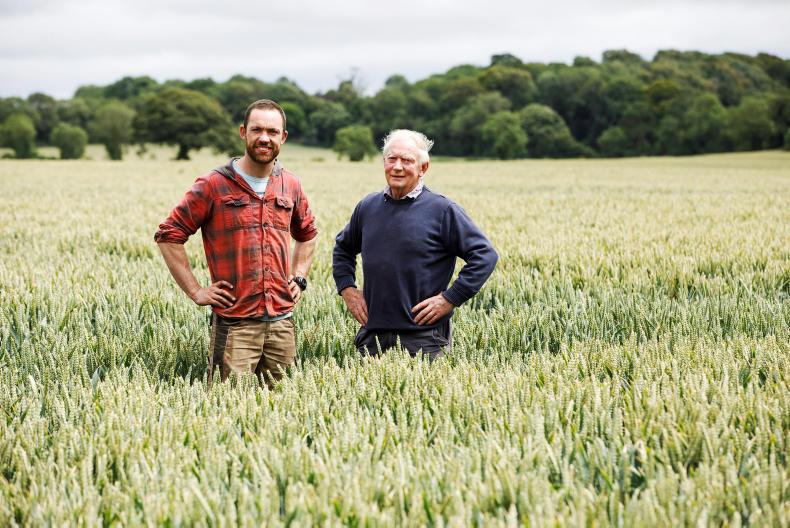
Billy Coleman with his son Rob on the home tillage farm at Castlemagner, Co Cork. \ Donal O’Leary
Billy secured sponsorship from Dunlop tyres and Shell oil, which helped as well. The first rally Billy won was the Circuit of Munster, which happened to be during his college exams. He even had to repeat a few at the time. When he graduated with a degree in commerce, the Ford rally team manager in the UK wanted to meet him to discuss his future motoring career. But Billy had a student visa organised for America and went there for a year, gaining experience on farms and driving the length and breadth of the US.
“When I came back and contacted the man in Ford, the whole scene had changed, you only get that kind of chance once,” Billy says, but he was not to be deterred and decided to go ahead and enter the British Rally Championship anyway.
In spite of all the Troubles in the North, when the political scene was really bad here in the early 70s, we got on famously well with the English
“I was always a bit of an adventurer really. When I first went over to try the British Rally Championship my father told me it was a waste of time. But we won it and he was the first one to congratulate me then. We had an absolutely incredible team of young lads, mostly from here in the south west, and my brother John gave huge support along with playing football for Cork and rugby for Munster. It was as much about the team as it was the driving. In spite of all the Troubles in the North, when the political scene was really bad here in the early 70s, we got on famously well with the English.
“The RAC rally in Great Britain was probably the biggest rally in the world at the time, would have had anything up to 250 entries. Up to 40 cars would be factory built, manufacturers’ cars; Fords, Fiat, Lancia and Saab. There’d be a load of young Fins in Saabs, semi-official works cars, but they’d be red hot drivers. So it was ferociously competitive.”
Billy won the British championship in 1974 and nearly won it the following year, but was just pipped at the end by the great Roger Clark. Billy then did a season with a London team and they had a Lancia Stratos; an Italian car with a Ferrari engine, part of the Fiat group.
Overcoming illness
A bout of illness changed things for Billy. For a long time the doctors weren’t sure what was wrong with him. Through word of mouth, he figured out that his symptoms could be that of brucellosis, which was rampant at the time.
“I got a bad dose of it and I wasn’t right for a couple of years.”
A course of antibiotics recommended by a specialist in Dublin didn’t fix things. Billy was given tetracycline, “but the harvest started and I came in one night, fell into the chair and couldn’t get up. You’d be going grand for the day and then it would just hit you”.
Then a Cork doctor told him that brucellosis was a countryman’s disease and they “know nothing about it up in Dublin”.
“Tetracycline wasn’t worth a curse without the streptomycin, so I got a double whammy of that. I haven’t looked back since,” says Billy.
I got to the top six – or four even a few times – but if you want to be consistently up there, it takes 12 months of the year
Billy went back driving then in a Porsche with the pro-drive team in the UK, where he also drove four-wheel drive Metros and a BMW M3.
“I got to the top six – or four even a few times – but if you want to be consistently up there, it takes 12 months of the year. I did Corsica, which is the French round of the world championship, in a Porsche in 1985 and I was over there for 10 days practising. It was probably a four-day event, with no night driving, which was unusual enough. It was hundreds and hundreds of miles around Corsica and the roads are so torturous, it is a hell of an event. You could have spent two months practising if you really wanted to win it. Sure I wasn’t going to do that. That’s where the farming really clashed. I was lucky I had my wife Carmel and a good team on the farm always.”
After 20 years of rallying, Billy concludes that it “wasn’t bad” as careers go.
“At that time, eyesight was what caused drivers to retire. It’s a God-given gift really. If turbines 20 miles away stopped turning, I’d still be able to see it. At 40 with the night driving, eyesight would get to drivers.”
He had power steering in the Metro, but not the Porsche so there was a “bit of muscle involved” too and a good driver needed good reflexes. The trust between navigator and driver was also key.
The events were so long, you wouldn’t have a hope in hell of remembering it all
“If you had a photographic memory, it would stand to you no end. You had to have absolute confidence in what the co-driver was saying. But now what they do is record with a video camera in the practise and then go back to the hotel room and watch that. But I would have finished last if we were doing that, I’d be too scatterbrained.
“The events were so long, you wouldn’t have a hope in hell of remembering it all. A lot of accidents happen in rallies over a brow, the road might be straight for 400 yards after the brow but you’re totally blind. The Porsche would have been doing 130mph on small roads. Nigel Mansell, who was a F1 driver at the time, came with me in the Metro one time on the Isle of Man and he said to me afterwards, ‘I wouldn’t do it for any money, it’s so dangerous’. But I suppose it feels a lot worse in the passenger seat.”
Road safety
Today there is a Billy Coleman Award worth €50,000 for emerging talent in rallying. Billy goes to present the award each year and his advice to young people is to only do rallying for the enjoyment of it.
“If you invest too much in it and a car gets broken up it can take tens of thousands to fix.”
He also has very strong views on road safety, particularly in light of the videos circulating on social media where people were taking risks with farm equipment. Billy also says that while mobile phones are a fantastic tool, they have no place in a car.
You don’t have that right to take other people’s lives in your own hands
“It is a big fear that after all my driving, that I would die at the hands of a texter. You’d spot it a mile away because the car coming towards you is weaving. The odd glance is on the road but mostly on the phone, it’s absolutely scandalous. You don’t have that right to take other people’s lives in your own hands.
“I believe in speed limits, in fact they should be lower in highly populated areas where there are kids, elderly people and cyclists. The majority of people are not capable of driving at high speeds when something goes wrong. I did plenty of things in my time that maybe I shouldn’t have done, but at least we didn’t have the phones.”
Read more
Second Gear: the Machine Deane and the Drift Queen
Billy Coleman is happy to hold the title of “the slowest driver” in Castlemagner. Ironically, he is also of that generation that never had to sit a driving test in order to gain a license. But for anyone that was around in the 1970s and 1980s, Billy is a motoring legend. He was the man that showed the world of rallying what the Irish were made of. This was in a time when rallies were broadcast on national TV and the sport had a huge following.
In a career spanning almost 20 years, the Millstreet Maestro won numerous titles including the British rally championship in 1974 and the Irish Tarmac Rally Championship in 1984.
“I’ve driven all over Britain, Ireland, France, Poland, Germany, Italy, South Africa, Sweden and Finland,” Billy tells Irish Country Living. But his first love is tillage farming, and the time commitment required for rallying often clashed with the farming calendar.
“There was a lot of time away. And you know, the rallies that time were frequently five days long, and maybe two nights – driving all night.
It was so competitive you wouldn’t believe it
“Any of the championship events, particularly the one in Britain, would have started on Saturday and run to the following Wednesday. [Farming and motoring] didn’t really complement one another time-wise. I was driving against Scandinavians at the time, who were absolutely eager to be full time at it. It was so competitive you wouldn’t believe it.”
Farming background
Both of Billy’s parents were from farming backgrounds and his family also had the local Ford dealership. Even in 2020, you will see New Holland tractors around the farmyard. Any other colour machine would have to be cleared by the family.
“I was driving cars out in the fields from the time I could reach the steering wheel. Then when I was in university in Cork, myself and a fellow student Dan Sullivan drifted into the Munster motoring club. I was in University College Cork (UCC) from 1965 to 1969. I started doing a few events with them and it just kind of went on from there, which was just as well because I wasn’t tall enough to be much good at anything else.”
You needed a bit of money but it was absolutely peanuts compared to what it is nowadays
Driving around the fields as a young lad, “I can tell you you’d get a clip in the ear if you didn’t behave yourself, if you were up to too much fancy stuff”.
Billy started out driving a Ford Anglia and then a Ford Cortina. When Ford started putting Lotus engines into the Cortinas, Billy and his team put the Lotus engine into a Ford Escort, which he bought for £250 crashed on the roadside.
“You needed a bit of money but it was absolutely peanuts compared to what it is nowadays. You could buy the whole car for probably what a few sets of tyres cost now. I would be trying to do it but I wouldn’t be a great mechanic, I just never had it. There were some brilliant mechanics in the garage at home.”

Billy Coleman with his son Rob on the home tillage farm at Castlemagner, Co Cork. \ Donal O’Leary
Billy secured sponsorship from Dunlop tyres and Shell oil, which helped as well. The first rally Billy won was the Circuit of Munster, which happened to be during his college exams. He even had to repeat a few at the time. When he graduated with a degree in commerce, the Ford rally team manager in the UK wanted to meet him to discuss his future motoring career. But Billy had a student visa organised for America and went there for a year, gaining experience on farms and driving the length and breadth of the US.
“When I came back and contacted the man in Ford, the whole scene had changed, you only get that kind of chance once,” Billy says, but he was not to be deterred and decided to go ahead and enter the British Rally Championship anyway.
In spite of all the Troubles in the North, when the political scene was really bad here in the early 70s, we got on famously well with the English
“I was always a bit of an adventurer really. When I first went over to try the British Rally Championship my father told me it was a waste of time. But we won it and he was the first one to congratulate me then. We had an absolutely incredible team of young lads, mostly from here in the south west, and my brother John gave huge support along with playing football for Cork and rugby for Munster. It was as much about the team as it was the driving. In spite of all the Troubles in the North, when the political scene was really bad here in the early 70s, we got on famously well with the English.
“The RAC rally in Great Britain was probably the biggest rally in the world at the time, would have had anything up to 250 entries. Up to 40 cars would be factory built, manufacturers’ cars; Fords, Fiat, Lancia and Saab. There’d be a load of young Fins in Saabs, semi-official works cars, but they’d be red hot drivers. So it was ferociously competitive.”
Billy won the British championship in 1974 and nearly won it the following year, but was just pipped at the end by the great Roger Clark. Billy then did a season with a London team and they had a Lancia Stratos; an Italian car with a Ferrari engine, part of the Fiat group.
Overcoming illness
A bout of illness changed things for Billy. For a long time the doctors weren’t sure what was wrong with him. Through word of mouth, he figured out that his symptoms could be that of brucellosis, which was rampant at the time.
“I got a bad dose of it and I wasn’t right for a couple of years.”
A course of antibiotics recommended by a specialist in Dublin didn’t fix things. Billy was given tetracycline, “but the harvest started and I came in one night, fell into the chair and couldn’t get up. You’d be going grand for the day and then it would just hit you”.
Then a Cork doctor told him that brucellosis was a countryman’s disease and they “know nothing about it up in Dublin”.
“Tetracycline wasn’t worth a curse without the streptomycin, so I got a double whammy of that. I haven’t looked back since,” says Billy.
I got to the top six – or four even a few times – but if you want to be consistently up there, it takes 12 months of the year
Billy went back driving then in a Porsche with the pro-drive team in the UK, where he also drove four-wheel drive Metros and a BMW M3.
“I got to the top six – or four even a few times – but if you want to be consistently up there, it takes 12 months of the year. I did Corsica, which is the French round of the world championship, in a Porsche in 1985 and I was over there for 10 days practising. It was probably a four-day event, with no night driving, which was unusual enough. It was hundreds and hundreds of miles around Corsica and the roads are so torturous, it is a hell of an event. You could have spent two months practising if you really wanted to win it. Sure I wasn’t going to do that. That’s where the farming really clashed. I was lucky I had my wife Carmel and a good team on the farm always.”
After 20 years of rallying, Billy concludes that it “wasn’t bad” as careers go.
“At that time, eyesight was what caused drivers to retire. It’s a God-given gift really. If turbines 20 miles away stopped turning, I’d still be able to see it. At 40 with the night driving, eyesight would get to drivers.”
He had power steering in the Metro, but not the Porsche so there was a “bit of muscle involved” too and a good driver needed good reflexes. The trust between navigator and driver was also key.
The events were so long, you wouldn’t have a hope in hell of remembering it all
“If you had a photographic memory, it would stand to you no end. You had to have absolute confidence in what the co-driver was saying. But now what they do is record with a video camera in the practise and then go back to the hotel room and watch that. But I would have finished last if we were doing that, I’d be too scatterbrained.
“The events were so long, you wouldn’t have a hope in hell of remembering it all. A lot of accidents happen in rallies over a brow, the road might be straight for 400 yards after the brow but you’re totally blind. The Porsche would have been doing 130mph on small roads. Nigel Mansell, who was a F1 driver at the time, came with me in the Metro one time on the Isle of Man and he said to me afterwards, ‘I wouldn’t do it for any money, it’s so dangerous’. But I suppose it feels a lot worse in the passenger seat.”
Road safety
Today there is a Billy Coleman Award worth €50,000 for emerging talent in rallying. Billy goes to present the award each year and his advice to young people is to only do rallying for the enjoyment of it.
“If you invest too much in it and a car gets broken up it can take tens of thousands to fix.”
He also has very strong views on road safety, particularly in light of the videos circulating on social media where people were taking risks with farm equipment. Billy also says that while mobile phones are a fantastic tool, they have no place in a car.
You don’t have that right to take other people’s lives in your own hands
“It is a big fear that after all my driving, that I would die at the hands of a texter. You’d spot it a mile away because the car coming towards you is weaving. The odd glance is on the road but mostly on the phone, it’s absolutely scandalous. You don’t have that right to take other people’s lives in your own hands.
“I believe in speed limits, in fact they should be lower in highly populated areas where there are kids, elderly people and cyclists. The majority of people are not capable of driving at high speeds when something goes wrong. I did plenty of things in my time that maybe I shouldn’t have done, but at least we didn’t have the phones.”
Read more
Second Gear: the Machine Deane and the Drift Queen





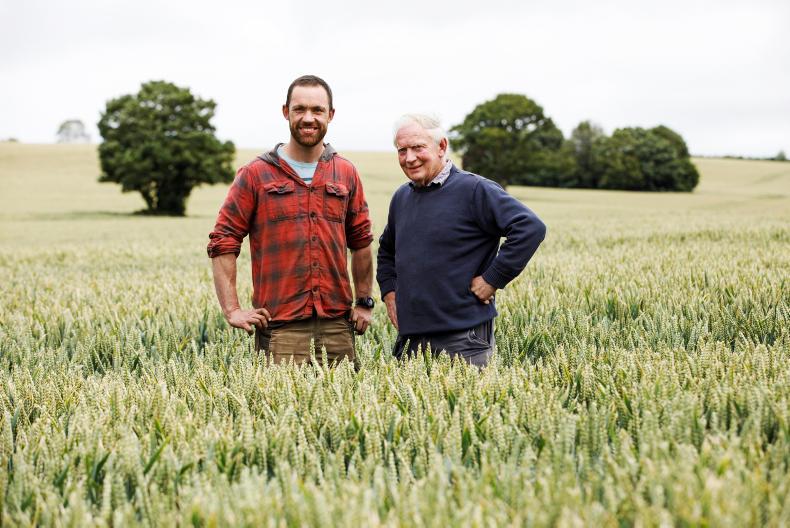
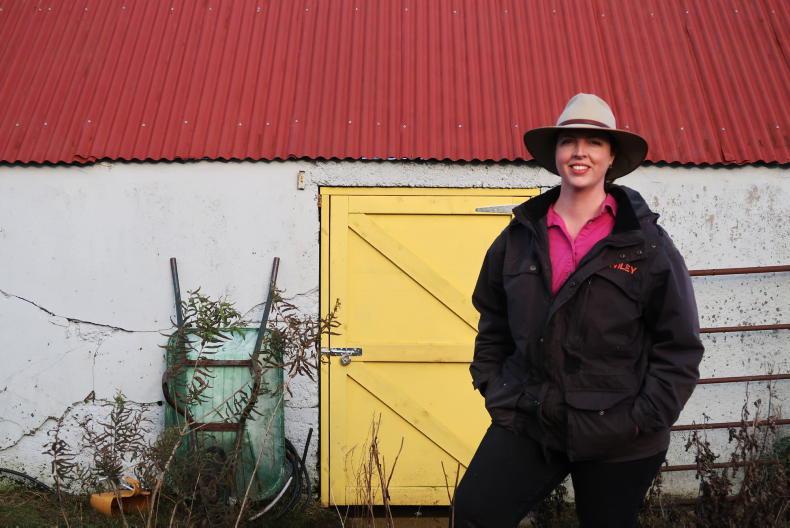
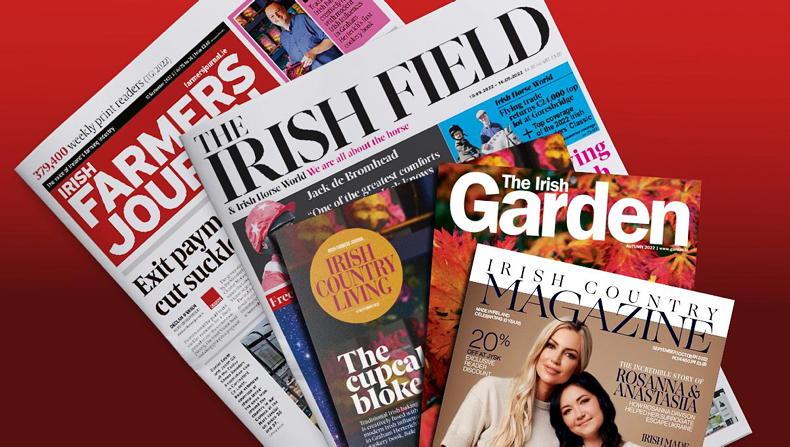
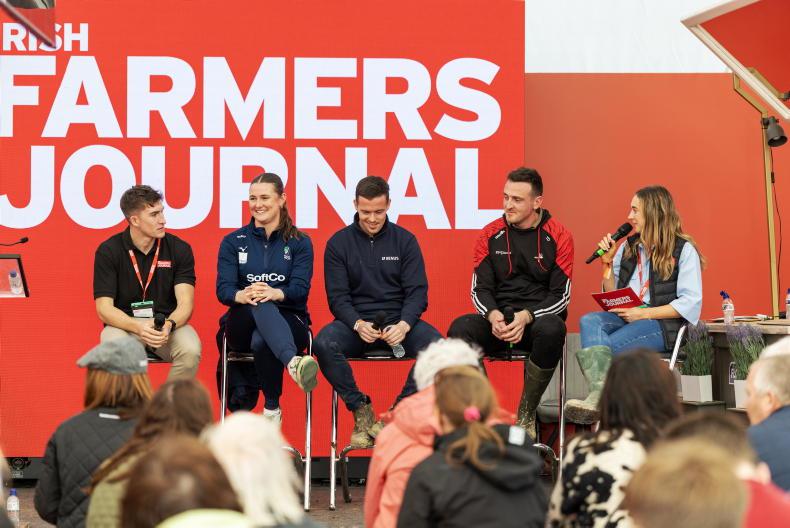

SHARING OPTIONS